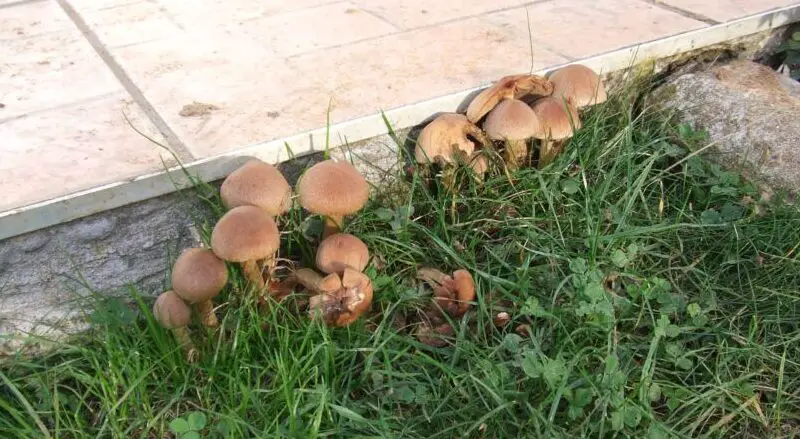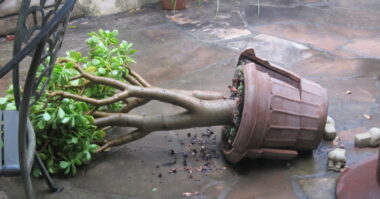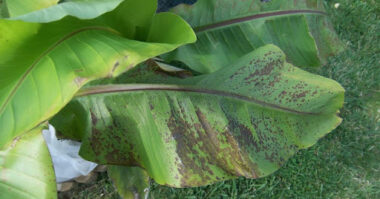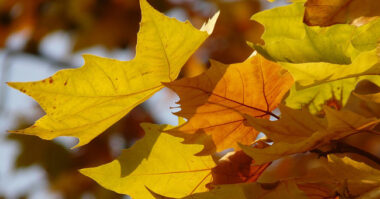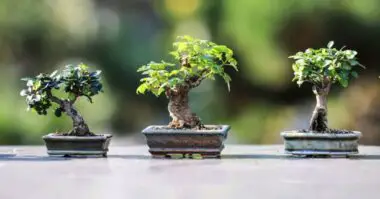In the garden, planter boxes, on trees, shrubs or in the vegetable garden, mushrooms do not always have a very good reputation. However, some of them help decompose dead organic matter in your garden, thus playing a vital role in soil ecology.
Contents
Why are there small mushrooms growing in my garden?
Mushrooms spread very easily once they appear, it can be difficult to control them. Mushroom growth is a fairly simple formula of elements, and when the conditions are right, you can expect to see mushrooms appear.
Once you know what causes fungi to appear and spread, you can easily determine where the problem areas are so that you can eliminate and prevent them in the future.
Moisture
You may have noticed that mushrooms appear during the night after a shower the night before. Moisture is one of the main ingredients that cause mushrooms to appear in your garden.
Organic matter
Organic matter is the second piece of the puzzle when it comes to mushroom growth. Fungi grow by decomposing organic matter, such as the remains of tree roots, a stump or buried wood.
Shaded areas
The last part of the mushroom recipe is shade. Not all garden mushrooms thrive in the shade, but there are many varieties that do. When you bring the right combination of moisture, organic matter and shade, you can expect mushrooms to appear.
The three groups of mushrooms in the garden
The way in which fungi obtain food allows us to classify them into three groups: parasitic fungi, saprotrophic fungi and those called symbiotic fungi.
- Real pests, parasitic fungi are responsible for many attacks on plants or animals that can lead to their dieback or death. However, they play a necessary and important role in the regulation of plant and animal populations in an ecosystem.
- Saprotrophic fungi or so-called saprophytic fungi have the capacity to recycle organic matter. These decomposers play a capital role since they prevent the ecosystem from being suffocated by the accumulation of plants.
- Living in association with the plant on which it has taken up residence, the symbiotic fungus feeds on its glucose. In exchange, it promotes the growth of its host by providing water and minerals and protecting it from parasites.
The benefits of small mushrooms in the garden
Apart from the so-called parasitic mushrooms, many mushrooms are therefore beneficial whether in our gardens, on our plants or on our plates. This is particularly the case of strophaires which, associated with certain vegetables, increase their yield.
Oyster mushrooms, for example, feed on nematodes, these small parasitic worms that attack many plants, but more specifically potato plants or tomato roots.
The button mushrooms or shiitake mushrooms are not to be outdone. In addition to bringing a touch of flavor to our recipes, they are excellent for the health of the vegetable garden thanks to their ability to stimulate the productivity of certain plants. So look at the mushrooms in your garden with a more serene look because they are more producers of fertilizer than pests.
How to get rid of small mushrooms growing in the garden
Although you may be tempted to walk around your lawn with a lawnmower to get rid of all the new fungus growth, it can actually make things worse. Fungi spread spores through the air, causing more and more fungi to grow.
Below is a simple, step-by-step process that will teach you how to properly get rid of backyard fungi so you don’t have to worry about more appearing.
1) Remove existing mushrooms
As mentioned above, fungi release spores causing more fungi to appear. If you leave mushrooms in your garden too long, they will release the spores and you will have an even bigger problem on your hands. As soon as you see new mushrooms, simply remove them from the soil.
2) Dispose of mushrooms properly
Properly removing fungi is a key step in preventing further growth. Rather than throwing them in a compost heap, you will want to completely separate the mushrooms from your backyard.
Take a plastic bag and put them in the bag as soon as you remove them from the ground. Once the bag of mushrooms is full, tie it up and throw it in the garbage. Doing it this way will help prevent the mushrooms from spreading more spores in your garden.
3) Apply nitrogen fertilizer
The application of a nitrogen fertilizer will accelerate the decomposition of organic matter. This leaves nothing for the fungi to feed on and discourages them from growing in the matter. You will need about one pound of nitrogen for every thousand square feet of your garden. Avoid using slow-release or water-soluble nitrogen fertilizer. For best results, do it every year.
4) Use soapy water to kill fungi
Mix approximately two tablespoons of dish soap with 2 gallons of water. Use a shovel to drill holes in the ground around the mushrooms and fill the holes with the soapy water mixture.
How to prevent mushrooms from growing back
Although proper removal of mushrooms and fairy rings will help control the growth of fungi in your garden, there is always a reason why they grew in the first place. By following the method below, you can further prevent fungi from growing back.
1) Make sure your garden has good drainage
As mentioned earlier in the article, fungi thrive in moist environments. If your backyard contains too much water, you’ll want to make sure it drains properly.
To introduce proper drainage in your garden, refer to the ideas below:
– Water flowing down a slope
If there is an area where water is flowing down a slope, accumulate soil to redirect excess water to a better location, such as a pond or garden.
– Excess water during storms
If water accumulates after storms, try placing rain barrels under waterspouts to collect excess water during the storm. This prevents water from entering the yard.
– Standing water
Adding a sub-surface drain can help disperse water and prevent it from stagnating under your yard, solving a multitude of drainage problems.
2) Make sure your backyard has well-drained soil
If your yard has a clay base, water will seep into your lawn and have nowhere to go, allowing it to sit and stagnate. If you can, mix sand or other well-draining material into your garden to help disperse the water.
When watering your garden, try to water it in the morning rather than at night. The sun will evaporate excess water rather than sit and cause fungi to grow.
3) Minimize shade
Mushrooms grow in shaded areas, so the more you can minimize shade, the better. Cut close to the trunk, just beyond the crest of the bark, and don’t leave any tips. When cutting, tilt down so that rainwater does not collect in the hole and cause rot. Cut off all dead or diseased branches to prevent your trees from developing fungus.
Dethatching the lawn will not only minimize shade but will also create more air circulation. Manually rake your garden with a convex rake. You can also rent an electric rake at a hardware store. Once the electric rake is done, use a standard rake to sweep up any remaining debris. For cool season grasses, dethatch your garden between late summer and early fall. For warm-season grasses, you’ll want to dethatch in late spring.
4) Aerate your lawn
If your backyard does not have sufficient air circulation, this can result in trapped moisture. Use an aerator and walk through your garden to remove plugs of soil. This loosens the soil to let more air in.
5) Remove decaying elements
Any decomposing elements or organic matter will give the fungi something to eat. Remove any small branches or decaying wood chips. Removing tree stumps can also help.
After mowing your lawn, collect the grass clippings or attach a grass catcher to your lawnmower. If you have pets, be sure to clean up their garbage as soon as possible to prevent fungi from feeding on it.
Summary
Mushroom growth in your garden can be a good thing, because it means you have a healthy ecosystem in your lawn. However, if you have children or dogs, they can become a concern.
Not only that, mushrooms can be simply unsightly to look at. We explain everything about mushrooms in your garden.
